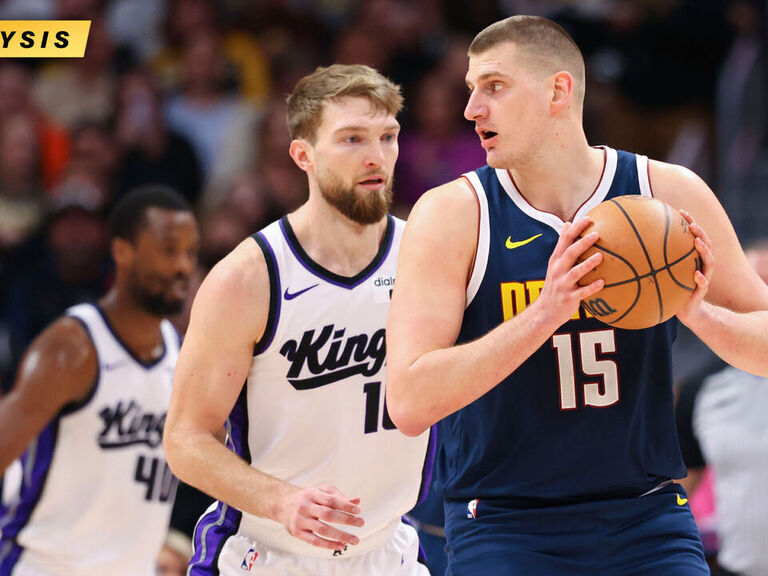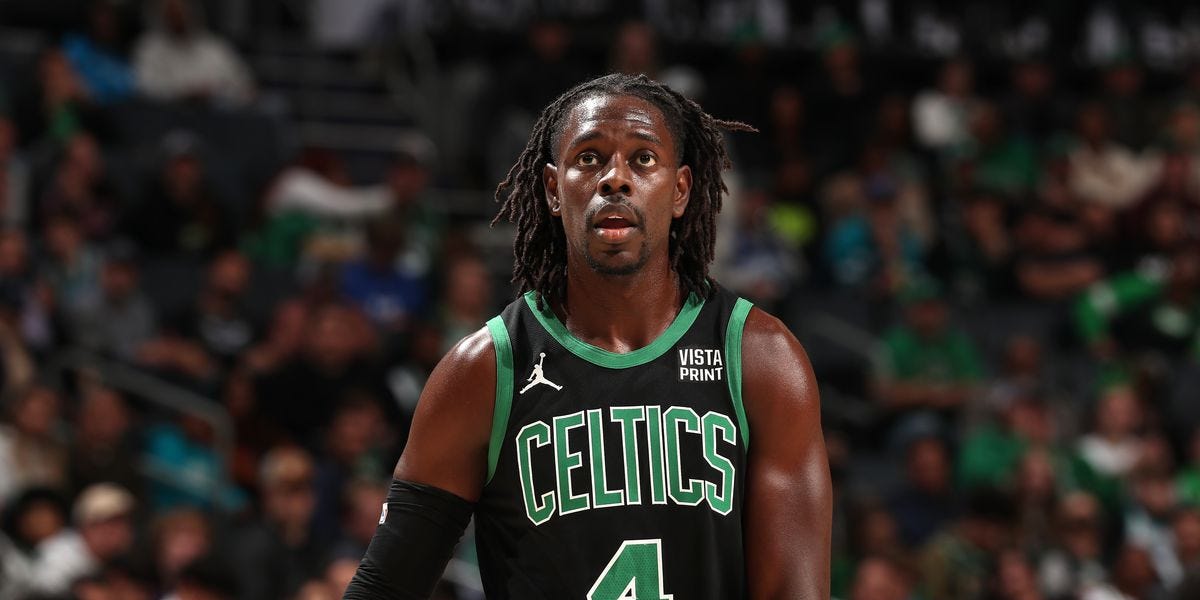- The NBA Librarian Weekly
- Posts
- Hoop'd Playoff Fantasy, Modern Offenses w/ a Vintage Twist, Inside Look at Bam and Herb on D + KP Postups and More
Hoop'd Playoff Fantasy, Modern Offenses w/ a Vintage Twist, Inside Look at Bam and Herb on D + KP Postups and More
Curating and summarizing the best NBA content of the week

Welcome to the NBA Librarian Weekly, where we curate and summarize the best NBA content of the week.
In Today's Edition:
ANNOUNCEMENT: We're making changes to Hoop'd Fantasy.
The winnings from the Regular Season League will be rolled into the FREE Playoff Version of the game. If you want a chance to win $200 for first place, as well as $50 each for second and third place, check out the details at:
Herb Jones an ELITE Defensive Breakdown
The New Orleans Pelicans have a top 5 defense—largely due to the brilliance of Herb Jones & the activity, connectedness, and effort of the group/scheme
Teamed up with New Zealand Breakers Coach @dsoko5244 to show HOW Herb is the key ingredient in the NOLA defensive jambalaya…🧵
— NBA University (@NBA_University)
3:20 PM • Apr 8, 2024
Great thread here by @NBAUniversity on Herb’s defensive impact.
Switching and Rotating: The Pelicans use switching and trapping effectively, with Herb Jones crucial in rotating to disrupt passes and slow offenses after identifying risky match-ups.
Game of Inches: Herb's deflections and ability to disrupt passes, even minimally, prevent opponents' scoring, demonstrating the NBA's narrow margins of advantage.
Zone Defense Flexibility: Employing a 2-3 zone defense allows Herb to impact a larger court area, showcasing his significant defensive reach and adaptability.
Iso Defense Against Top Players: Highlighted in an ISO scenario against "Jimmy," Herb's defense stands out, managing one-on-one situations effectively and showcasing his high-pressure capabilities.
Screen Assist: A Box Score Stat
A lot of good discussion in this podcast — it's fun to see how the players think the game in real-time. The part that stood out to me was the "screen assist," where a player sets a screen that directly enables a teammate to score, highlighting Rudy Gobert's proficiency in this aspect of the game.
JJ Redick argues that while screen assists are tracked in advanced statistics, they deserve recognition in the standard box score to more accurately reflect a player's impact on the game — using Draymond as an example to show his more significant impact on the game when he has one of those 7 points, 8 rebounds, 7 assists games, but we could also see 7 screen assists, for example.
Additionally, the discussion covers the "hockey assist," which demonstrates a player passing the ball to a teammate to facilitate a scoring opportunity, and the "Gortat screen," named after Marcin Gortat, which involves the screener setting an additional screen to create a scoring advantage, emphasizing the tactical nuances of effective screening in basketball.
Old School Plays with New School Flair
I liked how Joe called on some cool throwback vibes with teams mixing in old-school strategies, like the triangle offense, but with a modern twist that fits today’s 3-point happy game.
This involves adapting its principles to accommodate today’s emphasis on pace, space, and three-point shooting. Traditional triangle offense, popularized by Phil Jackson's Chicago Bulls and Los Angeles Lakers, focused on post play, mid-range shots, and cutting from the strong side. However, the modern version stretches the floor wider to integrate more three-point shooting and faster ball movement.
In the updated triangle, teams often position players around the perimeter to expand the defense and create more driving lanes and open shots from beyond the arc. This adaptation also involves more off-ball movement and less isolation play, encouraging a free-flowing, pass-heavy approach that takes advantage of modern players' versatility and shooting skills. While the core principles of the triangle—such as spacing, reading the defense, and exploiting mismatches—remain intact, the execution is more dynamic and tailored to the skill sets of contemporary players.
Kristaps Post Ups and Analytics
Kristaps Porziņgis has changed his game by diving deep into analytics, pinpointing the need to boost his post-up efficiency. Collaborating with coach Žanis Peiners, they scrutinized his playing style, discovering that Porziņgis was more effective with fewer dribbles and excelled with bank shots and direct baskets. This insight led to a refined approach, minimizing unnecessary movements and focusing on high-efficiency shots. The result was a dramatic transformation, making Porzingis one of the NBA's most efficient post-up players, averaging 1.30 points per post-up possession (PPP) with the Boston Celtics (0.81 PPP with Dallas).
This analytical transformation not only redefined Porziņgis’ individual game but also enhanced the Celtics' offensive dynamics, complementing stars like Jayson Tatum and Jaylen Brown. His newfound post-up prowess provided Boston with a reliable interior scoring threat, diversifying their offense and making them better prepared for the playoffs.
Bam’s Evolving Defense for the Heat
Bam Adebayo, renowned for his switch-heavy defense, has adeptly transitioned to more drop coverage, aligning with Miami Heat's evolving roster needs.
Despite this shift, he remains a defensive powerhouse, previously leading in pick-and-roll defenses with 1,444 instances, far outpacing others like Nic Claxton who had 1,191. His adaptability is underscored by his efficiency in drop coverage, where he allows 1.03 points per possession, showcasing his ability to blend traditional and modern defensive roles effectively. Adebayo's influence is pivotal in Miami's defense, contributing to fewer rim and corner three attempts by opponents.
His elite performance in isolation and pick-and-roll scenarios, marked by his low points allowed per possession, solidifies his standing in the Defensive Player of the Year discussions, highlighting his critical role in maintaining Miami's defensive fortitude.
The Hole in Boston’s Defense?
Great detail in this article.
In the realm of basketball analytics, there's a debate between relying solely on data versus observational analysis. The approach here leans towards integrating both, with data offering initial insights and film study providing context and verification. For instance, an analysis revealed that the Boston Celtics rank low in defending dribble hand-offs (DHOs), a detail backed by Synergy's numbers. However, film reviews, especially of teams like the Miami Heat and the Sacramento Kings, show these teams capitalizing on DHOs, exploiting the Celtics' defensive schemes that typically switch 1-through-4 while the center stays in drop coverage.
Despite this statistical vulnerability, the Celtics employ strategies to disrupt DHOs, like top-locking and action canceling, which often neutralize the threat before it fully materializes. This proactive defense, spotlighted in film clips, suggests that while Boston might statistically struggle against DHOs, they effectively counteract these plays in actual games. This nuanced view, blending data with visual analysis, challenges the notion that DHO defense is a significant weakness for the Celtics, illustrating the complexity and depth of strategic basketball analysis.
Additionally, consider subscribing to the Basketball Intelligence newsletter, an excellent source of inspiration for the content I choose to include in mine:





